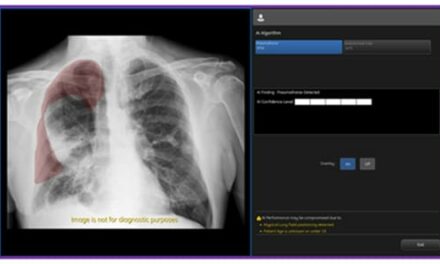Top respiratory professionals take a look back over 2002 and discuss what to anticipate for the upcoming year.

One of the year’s biggest positives was the arrival of certification for asthma educators—important because the credential advances asthma education to a level on par with that of diabetes education and also creates a single mechanism for determining the competence of asthma educators, says Susan Blonshine, RRT, RPFT, FAARC, AE-C, owner and director of TechEd Consultants in Mason, Mich.
“We’re only the second country in the world to provide an asthma educator certification,” she notes, adding that those who attain the designation will be in a position to deliver better outcomes. The effort to establish a certification process for asthma educators began in 1999. By the end of 2002, more than 130 candidates had been tested with approximately 80% successfully attaining the AE-C designation, Blonshine reports.
“I see this [area as] doing nothing but growing,” she predicts. “We have known for several years that one of the primary components of good management of asthma is education. It has reached a level of concern and action on the part of public health. The Centers for Disease Control and Prevention (CDC) hosted an annual conference titled ‘Living Well With Asthma’ as well as putting in place CDC asthma contacts in each state. Here in Michigan, we have had a statewide asthma advisory board in place for 2 years. A CDC grant has assisted us with the funds to implement Michigan’s strategic plan to decrease the burden of asthma in the state. In addition, a statewide communication plan was implemented with a Web site (www.getasthma help.com). The role of RTs continues to expand in the area of asthma disease management.”
Another credentialing-related development—the effort to make it easier for newly minted RTs to obtain a credential as a registered polysomnographic technologist (RPSGT)—continued to make headway during 2002. Smalling says the expectation is that this will be a done deal at some point in 2003.
“The Committee on Accreditation for Respiratory Care had submitted to the Commission on Accreditation of Allied Health Education Programs several proposed changes to the criteria for accrediting therapists,” he recounts. “The changes are meant to provide respiratory care training institutions with specific training requirements for sleep studies. They will give every respiratory therapy education program the option to graduate RTs cross-trained in polysomnography as a continuing component, or, alternatively, to integrate that training into the undergraduate curriculum. This will allow trainees to sit for the RPSGT examination just 6 months after graduation, rather than having to wait 12 to 18 months as was the case for the vast majority of RTs in the past. It will also introduce some much-needed consistency from one training program to the next.
“This is a vital development because polysomnography is an emerging profession. The problem is that it’s also a multidisciplinary field. It’s going through a lot of the same growing pains that respiratory therapy went through when that profession was first starting to evolve in the late 1960s.”
In the area of diagnostic assessment, the big story of 2002 was again something started years earlier—practice guidelines and standards. “Practice guidelines related to pulmonary diagnostics have been published through the American Association for Respiratory Care (AARC), the American Thoracic Society, and others, but this year, we saw a culmination of the strength that the guidelines and standards brought to our profession,” Blonshine says.
Internationally Speaking
On the international front, 2002 witnessed a sharp rise in the number of American RTs receiving invitations to provide instruction in countries around the world, reports Paul J. Mathews, PhD, RRT, FCCP, FCCM, FAARC, associate professor and admissions coordinator for the respiratory care education program at the University of Kansas Medical Center, School of Allied Health, Kansas City.
Mathews himself put together a team of therapists for an 80-hour course on respiratory and critical care in Vietnam. More than 500 Vietnamese physicians, nurses, and technicians attended. “This was actually a follow-on to a much shorter course we conducted there in 2001,” he says. “That event attracted 120 professionals—a standing-room-only crowd. It was so popular that we were asked to return in 2002 and present it in longer form to a larger audience.” Mathews mentions that, for the first trip to Vietnam, his team consisted of himself and two others; for the repeat engagement, he added four more instructors.
In conjunction with the trip to Vietnam, Mathews and his team also made a stop in China to provide much the same instruction to critical care practitioners in that country.
|
|||
| (From left) Thomas R. Smalling, MS, RRT, RPFT, RPSGT, Susan Blonshine, RRT, RPFT, FAARC, AE-C, and Paul J. Mathews, PhD, RRT, FCCP, FCCM, FAARC. |
A fascinating aspect of the invitations Mathews received is that the host countries were formerly closed societies taking great pride in utilizing none but their own approaches to medicine. He credits the AARC’s international fellows program—commenced in the late 1980s—with having played a role in opening up those lands to an appreciation for Western methodologies. “The foreign practitioners who have participated in the program have come to the United States, seen how we do things in respiratory care, and found it very enlightening,” he says. “They’ve gone back to their homes and, since they are opinion leaders there, they’ve been able to generate significant interest among their own colleagues in what we have to offer.”
Respiratory therapy also made inroads in Great Britain, which recently certified its first RT and will soon do likewise with a second. If this works out the way Mathews hopes, respiratory therapy in the United Kingdom will no longer be the sole province of physiotherapists and physicians.
Challenges
In 2002, Congress voted to fund scholarships for students seeking to become nurses, but provided no money to underwrite training of students who want to become practitioners of an allied health profession, such as respiratory therapy, Blonshine laments.
Some RT schools began talking about closing down, even though RTs remained in demand throughout 2002. “Schools are in desperate need of students. I hope that graduates of the schools and working practitioners will see it as their responsibility to help recruit enrollees in 2003. Many will grouse that they don’t have time to recruit because they’re so overworked, but the reason they are overworked is that they haven’t helped recruit,” Mathews says. “If they’d recruit, we could help fill the jobs that are causing therapists to be overworked.”
To remedy this situation, the AARC has been successful getting the word out about recruiting new RTs. In the April 2002 issue of the AARC Times, a story was printed about a threat of a respiratory therapy department closing in Manchester, Conn. All program graduates and other RT volunteers were asked to contact the media through letters and phone calls requesting stories to be run about the crucial need to recruit RTs. The result was a workshop to train clinicians to work with students on a one-on-one basis, which encourages them to spread the word about the valuable role RTs play in health care. In addition, the Connecticut Society for Respiratory Care has set aside $2,000 for two new grants to students attending one of the five respiratory programs in the state. This kind of advocacy benefits all RTs—not only does recruiting improve the field, it is something all RTs can become involved in. For information, contact the AARC at www.aarc.org.
In the final analysis, observers speculate that 2003 should prove at least as good—if not better—than 2002. For starters, Mathews believes more RTs will volunteer to go abroad during the coming months. “It’s one of the most enriching experiences an RT can have,” he assures. “Unfortunately, in 2002, we had more people wanting to make the trips than we had space to accommodate them, so we had to turn some away. We should have more ability to accommodate them in 2003, but I still predict the interest will be so great that we’ll end up turning some away once again; however, RTs must realize that these trips are costly and can result in a bit of a culture shock.”
Meanwhile, in 2003, it is possible that the armed forces will confer commissioned-officer status on RTs who serve in the medical corps of the Army, Navy, Air Force, Marines, and other uniformed branches of service, Mathews forecasts.
Speaking of conferred status, Blonshine looks for RTs to be recognized under a proposed new Medicare home-health benefit that Congress is soon expected to tackle. “At least, that’s what I hope will happen,” she says.
Smalling sees 2003 as a banner year for sleep medicine. “If it doesn’t happen in 2003, it will eventually become as big a field as home care,” he says. “It’s not a passing fad. But sleep won’t be the exclusive province of RTs. It’s a field that is attracting practitioners from other professions.”
Blonshine states that RTs can continue to broaden their options in health care. “We’re going to continue to see implementation of respiratory care protocols in the health care environment,” she says. “There will be an expansion into more areas of health care as we continue to prove the value of our profession. We’re already in case management, critical care, home care, diagnostics, sleep medicine, education, hospital administration, and technology research and development.” And so respiratory therapy is moving in the right direction for 2003.
Rich Smith is a contributing writer for RT Magazine.












